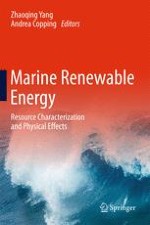2017 | OriginalPaper | Buchkapitel
Hydrokinetic Tidal Energy Resource Assessments Using Numerical Models
verfasst von : Kevin Haas, Zafer Defne, Xiufeng Yang, Brittany Bruder
Erschienen in: Marine Renewable Energy
Aktivieren Sie unsere intelligente Suche, um passende Fachinhalte oder Patente zu finden.
Wählen Sie Textabschnitte aus um mit Künstlicher Intelligenz passenden Patente zu finden. powered by
Markieren Sie Textabschnitte, um KI-gestützt weitere passende Inhalte zu finden. powered by
